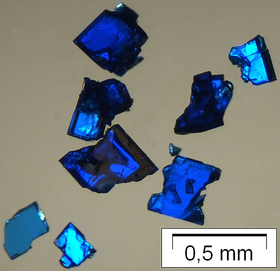In this project magnetically interesting phenomena are induced via unusual coordination spheres or the creation of unusual oxidation states. An example of an unusual metal coordination is the octahedral surrounding of the Pd2+ ions in the disulfate Pd(S2O7) (Fig. 1, left; Fig. 3), which we were able to synthesize via the reaction of elemental Palladium with SO3. In spite of the electronic d8 configuration nearly undistorted octahedral coordination of oxygen atoms is very uncommon and has never been observed for simple coordination compounds before. This unusual surrounding of the Pd2+ ions leads to paramagnetism of the compound and to ferromagnetic ordering at low temperatures (11.6 K) which has never been observed before for a Pd(II) compound.

Fig. 1 Octahedral Pd2+ coordination in the crystal structure of Pd(S2O7) (left) and the magnetic properties of the compound (right).
Unusual oxidation states are possible via special synthetic routes, even under alleged oxidative reaction conditions. An older example is the Gold(II)sulfate Au2(SO4)2 with a dumbbell shaped Au22+ ion, which could be prepared via the reaction of Au(OH)3 in conc. H2SO4, a more recent example is the stabilization of Mo(V) in the unusual sulfate-hydrogensulfate MoO(SO4)(HSO4) (Fig. 2), which could be obtained via the reaction of Mo(CO)6 in Oleum. Also for the element Vanadium a number of low and mixed valent sulfates could be synthesized and characterized with the help of magnetic measurements.

Fig. 2 Crystals of MoO(SO4)(HSO4)
Abb. 1: Oktaedrische Pd2+-Koordination in der Kristallstruktur von Pd(S2O7) (links) und magnetische Eigenschaften der Verbindung (rechts).
Ungewöhnliche Oxidationsstufen können durch spezielle Syntheseverfahren erhalten werden, selbst unter vermeintlich oxidativen Reaktionsbedingungen. Ein älteres Beispiel ist das Gold(II)sulfat Au2(SO4)2 mit einem hantelförmigen Au22+-Ion, das durch Umsetzung von Au(OH)3 in konz. H2SO4 erhalten wird, ein neueres Beispiel die Stabilisierung von Mo(V) im ungewöhnlichen Sulfat-Hydrogensulfat MoO(SO4)(HSO4) (Abb. 2), das durch Reaktion von Mo(CO)6 in Oleum erhalten wird. Auch für das Element Vanadium konnte eine Reihe von nieder- bzw. gemischtvalenten Sulfaten dargestellt und mit Hilfe von magnetischen Messungen charakterisiert werden.

Abb. 2: Kristalle von MoO(SO4)(HSO4)